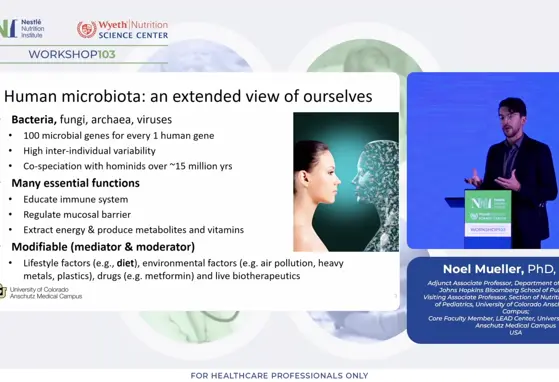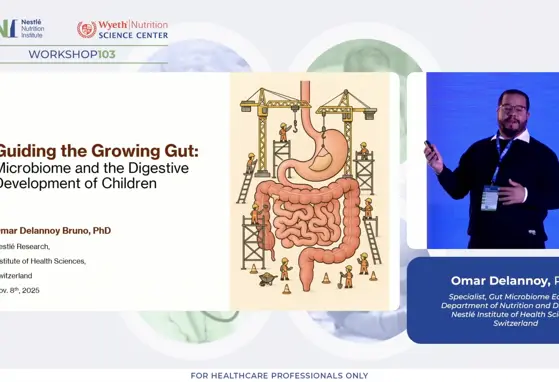Nutrition during pregnancy in Africa
Dr F AMON-TANOH-DICK
Titular Professor of Pediatrics, CHU YOUPOUGON ABIDJAN COTE D’IVOIRE,
08 BP 549 ABIDJAN 08, dickflore32@gmail.com
Introduction
Recent developments in nutrition during pregnancy revolve on the first 1000 days. Based on the 1000 days concept, good nutrition is critical from the beginning of pregnancy up to the child’s second birthday; and whatever is lost during the first 1000 days is usually irreplaceable.
What is known:
The placenta on the maternal side is implanted on the uterus and is linked to the fetus by the umbilical cord. This permits the continuous exchange of nutrients from maternal to fetal blood which is indispensable for adequate fetal development. The placenta also allows the passage of certain harmful substances like alcohol, nicotine and certain drugs as well as microbes like the HIV and the rubella viruses. The pregnant woman should therefore be very vigilant on her lifestyle and habits throughout her pregnancy.
During pregnancy and breastfeeding the woman needs additional intake of proteins and energy in order to build the necessary reserves to prepare for breastfeeding and to face the growing needs of the fetus. The additional nutritional needs of the woman depend on her level of activity and her initial nutritional status. A well-nourished woman who is moderately active should aim at increasing her food intake by 100 Kcal and 6 to 7g of protein per day. A well-nourished woman engaged in heavy activity like subsistence agriculture could need an additional 200 kcal per day. Undernourished women should increase their intake by 200 to 285 kcal per day to reduce risks of underweight births and also to prepare for adequate breastfeeding. A breastfeeding mother will need an additional 500kcal and between 18 to 21g of protein per day.
The energy and nutritional content of the breast milk come partially from food intake and in part from nutrient reserves that the mother stored up during pregnancy. For sufficient production of breast milk it is more useful for the mother to constitute good reserves during pregnancy than to increase food intake after delivery. Pregnant and breastfeeding women also need additional iron, folic acid and additional vitamin A and C to cover the increased specific nutritional needs of their body’s.
What should cause us to change behavior?
In the past an artificial separation was made between the health of the mother and that of the child. These days we talk about prenatal nutrition in terms of the quantity and quality of food taken by the pregnant woman. The fetal developmental index validated by the birth weight (a reflection of the nutritional status of the newborn) is an index of perinatal health. Birth is thus considered as a stage in the growth and evolution process which begins at conception, or even before, and goes on unto adulthood, the initial experiences having a possible impact at every stage of existence.
Micronutrient deficiency (iron, folic acid, zinc, calcium) increases risks of prematurity and Small for Gestational Age (SGA) births; a weakened immune system increases risks of hypertension as an adult. Epidemiological studies have shown that long-term associations of SGA children include stunting, insufficient cognitive development, abnormalities in glucose metabolism, renal, immune and cardiovascular and pulmonary function.
The mental development of a child born SGA may be retarded, as was shown by a scanned image of the brain of a malnourished 3 year old compared to that of a normal child of same age. A deficiency in cognitive development implies the child will have a reduced learning capacity leading to a poor academic performance and a consequent poor economic productivity. This could have an impact on the economic development of a whole country. Studies have shown that in countries where the incidence of malnutrition is high, there could be a 2- 3% loss of the per capita income.
Insufficient intake of the right fatty acids by the pregnant woman will affect the brain development of the fetus. An exaggerated consumption of sugar and fatty foods during pregnancy contributes to the onset of obesity later on in the child. A balanced nutrition and discipline as concerns nutritional choices is the recipe for the creation of optimal conditions in utero for the baby to be in good health after birth and in the future.
The Situation in Sub Saharan Africa:
A Serious Public Health Problem
Abnormalities in fetal development which is a reflection of the health of the pregnant mother, contributes a good portion of mortality and handicap around the world. This burden is particularly heavy in developing countries especially in Sub Saharan Africa. The increased prevalence of SGA and LBW, infant malnutrition and the upsurge of renal, cardiac and pulmonary pathologies as well diabetes are all indicators of the nutritional health of pregnant women.
The Impact of Traditions and Customs
In some parts of Africa pregnant women are asked to eat soil. This it is believed will permit the future baby to recognize his land. It is also said to be a way to thank the earth for nourishing and carrying us. It is also believed that eating clay soil will act as a beauty treatment to the fetus and give it a good skin at birth and will also facilitate delivery by lubricating the skin of the fetus. Also in these settings, fluids are highly recommended during pregnancy while foods that are pasty or slimy (e.g. sticky rice and the sap from plantain, etc.) are believed by some to interfere with delivery; each civilization has rules and customs they follow!
African Diets and their Nutritional Composition
The composition of the diet is important from the point of view of its nutritional content, the frequency of meals and the distribution of food within the family. The feeding habits and the food consumption structure of a community are usually closely related to the ecology of where they live. The cultivation of plants, an enterprise brought about as a response to the natural ecosystem, has given birth to two types of food agriculture. One is the agriculture that consists of planting seeds and is practiced in the arid areas of Africa. Plant domestication could also lead to dependence of a population on certain species like rice, maize, cassava or plantain. If a particular crop is poor in a particular nutrient a deficiency in that particular nutrient could develop in that community. The second depends on a vegetative reproduction of plants (roots and tubers) and is practiced in the wet tropical plains of Africa.
Normally nomadic animal breeders do not practice any form of horticulture. Their diet is traditionally made of animal products complemented by seasonal plants. It has been observed however that cereals like millet, sorghum are occupying ever increasing proportion of the diet in Sub Saharan Africa. Other changes in the diet are associated to the ever increasing urbanization taking place in the African population. As a result of such population movements local cereals like sorghum, millet, yams are being replaced by more modern foods, for example maize, rice, wheat and their derivatives.
The Nutritional Content of African Diets
Making general assumptions is hardly useful to describe complex issues like diets, because they depend on a multiple factors such as economic, social and cultural and could be very specific as you move from one region to the other and between different communities. However, African diets are generally made of a carbohydrate rich meal accompanied with soups, seasonings and sauces, at times with pepper, and large variety vegetables. A good portion of the energy content of the diet is from the basic food which could also contain some proteins. Cereals like sorghum, millet, rice contribute between 40 to 60 percent of the total energy content of most African diets. The seasonings provide the lipids, proteins, vitamins and minerals and give flavor and taste. The composition and origin of the basic carbohydrate content of the diet usually remains the same in the community while the seasoning - usually made of green vegetables, dry vegetables or nuts, meat or fish if any – varies in taste, consistency and content according to the family’s resources and their feeding habits.
The consumption of vegetables in Africa is poorly documented because they are of wild origin at times and this makes estimations complicated. The lipid content of most African diets is usually very low. In sub-Saharan Africa, lipids make up about 18 percent of the energy content of the diet while in certain populations this varies between 7 and 15 percent of the calories provided by the diet. Also the menus are usually of low animal protein content (mainly from sheep and goats) and derived products provide just about 3 percent of the total energy output of the diet. The consumption of milk in Africa is also very low, with the exception of certain countries of the Sahel region like Kenya, Mauritania, Somalia and Sudan, because of the low milk production of the animals and the lack of milk conservation facilities. Lactose intolerance that is widely found in African adult population could be a possible result of the low milk consumption. The lack of resources and difficulties to have access to food has led some African communities to develop diets that give priority to local products. Food deficiency results usually from lack of financial or other resources such as employment, land and even lack of time especially in the case of women.
Frequency of meals and distribution of food within the family
In most homes the frequency of meals adapts to the live style and the work timetable of the family. The main meal in most homes in the rural areas is prepared and served in the evening after the adults are back from the farms and the children are back from school. The breakfast is usually made of left-overs, heated or not, of the main meal of the previous evening served with tea. In the cities, bread served with tea or coffee is often served for breakfast. In certain cases, if the place of work or school is far away, the adults and children take with them cold food to eat as breakfast when they arrive. In the cities, men and women usually have for lunch food bought in roadside restaurants or company canteens. This will be the main meal of the day for men who live alone without appropriate cooking facilities. In the evenings some men have supper made mainly of roasted foods and biere. In rural areas, lunch is taken to the farm and eaten there during the farming seasons. Children of school going age are given some money to buy snacks during break periods. In some cases they are served portions of food from the school canteen.
Mothers keep with them the younger children when they go the farms, their different work places or the markets where they carry out commercial activities. In some communities the mother starts by serving food to her husband and to the other men of the family; the women and children are to eat only when the men have had enough. At times the boys eat before the women and girls. This order is a reflection of the priority given at times to those who bring in income to the family, but it’s unfortunately at times at the detriment of the more vulnerable members of the family who are exposed to under nutrition. Though this unequal distribution of food within the family is usually a problem, it is important to note that in most cases under nutrition is as a result of insufficient provision of food.
Planning of the Diet
A housewife, pregnant or not does not plan her diet based on her nutritional needs when she is busy feeding her family. Food production, transformation and preparation are so much a part of her daily life and routine that it is often difficult for her to explain how she feeds her family. If this woman is a farmer she will cultivate and stock food products that her family prefers and that she is used to cooking. However her choices are limited by the nature of the soil she has to work on, the size of the farm, the amount of help she can expect from her children and by the storage capacity she has at her disposal. When she has to buy food items her revenue is often what limits her choices. She is faced at times with the question of storing or selling part of her farm produce to raise revenue for other needs. This explains why women in this context find it difficult to apply whatever knowledge they receive on how to prepare balanced meals for their families. Adding food of animal origin will contribute in providing lipids which provide a good source of energy, iron and vitamins like vitamin A and folate (from liver). If animal proteins are scarce to come by, it is still possible to improve the protein content of the diet by introducing in each meal a variety of products of plant origin.
Access to Good Nutrition a whole Program
The control of women on resources and its impact on Nutrition:
According to the FAO, five strategies have to be put in place to help women to improve their nutritional wellbeing and that of their family and to recognize and integrate the pregnant woman as part of the vulnerable segment of the society which includes young children:
- The age at which women start having children and good child spacing
- Increased access to education, information on health and nutrition
- Improved access to maternal healthcare facilities
- Improved knowledge and access to quality care before, during and after delivery for the women and their communities
- Improving the place of the woman in the society (better access to education for girls; more opportunities for women to generate income and greater control over its use
Conclusion
Adequate nutrition during the first 1000 days window could have a profound impact on the capacity of the child to grow, learn and eventually get out of poverty. Achieving adequate maternal nutrition in sub-Saharan Africa is a critical step towards the reduction of infant mortality and morbidity and a step towards the reduction of the emerging metabolic and cardiovascular diseases in adulthood. All the stakeholders (politicians, NGO’s, economists, healthcare professionals, agriculture specialist, industries) should work together towards this goal.
If you liked this post you may also like

Mindful Microbes: The Interplay Between Environment, Gut Microbiome, Brain, and Behavior

Exploring the Crosstalk: Nutrition, Microbiome, and Cardiometabolic Health

Guiding the Growing Gut: Microbiome and the Digestive Development of Children

Nourishing the Microbiome at Preschool age: Dietary influences from infancy to present